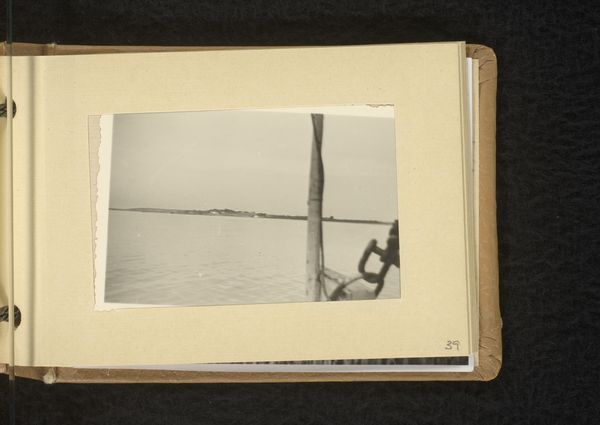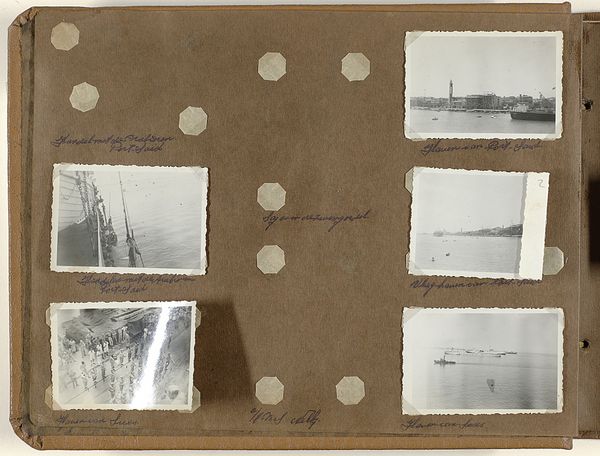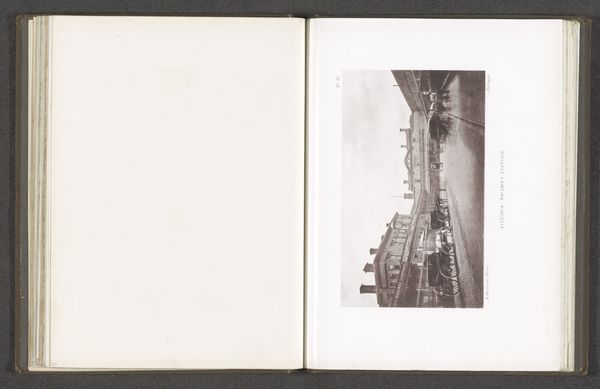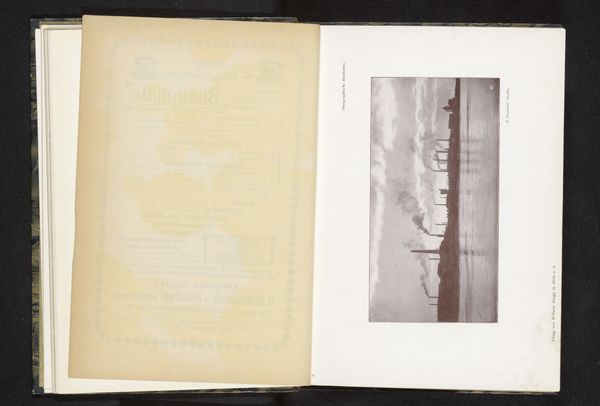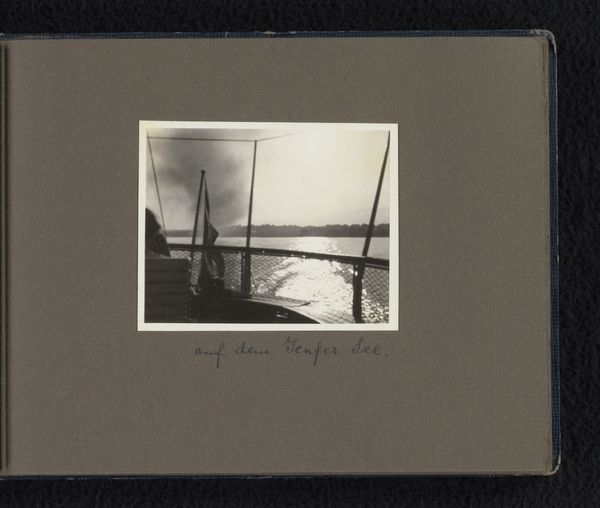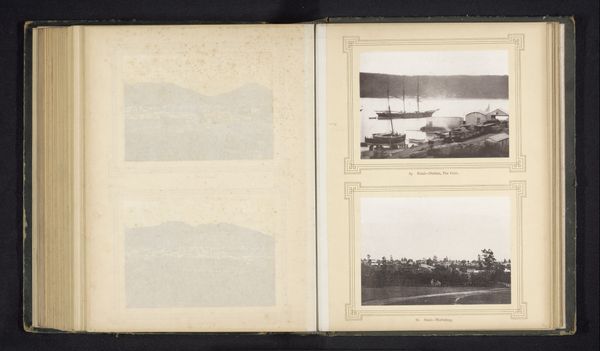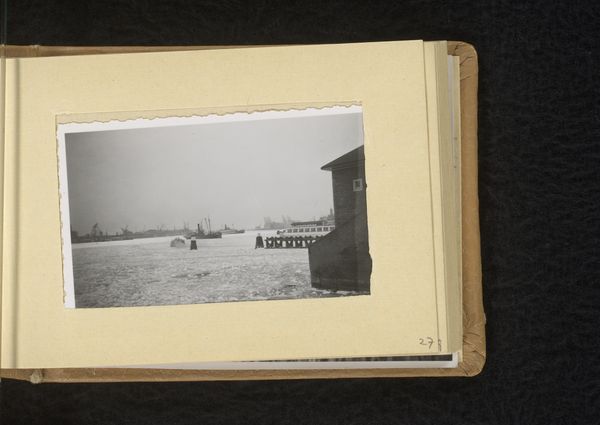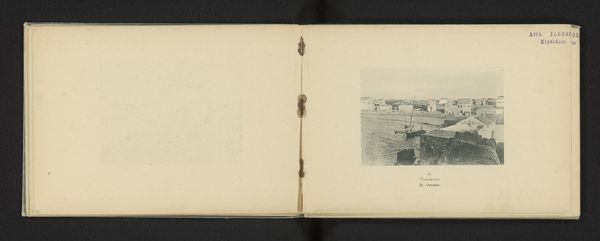
photography, gelatin-silver-print
#
landscape
#
photography
#
gelatin-silver-print
#
modernism
Dimensions: height 60 mm, width 90 mm, height 85 mm, width 120 mm
Copyright: Rijks Museum: Open Domain
Curator: Here we have an untitled gelatin-silver print, referred to as "Dijk," dating from 1940 to 1943, mounted within what appears to be a photo album. Editor: Immediately, I’m struck by the contrast. The choppy water, the stark gray sky. It feels bleak, industrial even. Is that a pier or some sort of breakwater dominating the center? Curator: Precisely. The composition employs a strong horizontal emphasis. The linear form divides the picture plane into distinct registers, emphasizing the stark boundary between water and sky. Observe the texture – a deliberate roughness perhaps? Editor: The gelatin silver print itself adds to that sense of tangible texture and, yes, perhaps a comment on the making of place and landscape as subject to labor. The presence of those posts implies purpose. Someone built this; someone is maintaining it. Curator: Note how the photographer manipulates the tonal range to compress space. The image forfeits atmospheric perspective in favour of graphic flatness and simplified forms—a quality reflective of certain Modernist aesthetics. Editor: And given the probable date range, those functional details become poignant. One starts considering its function during the early war years—protection, maybe? The breakwater suddenly feels less like neutral infrastructure, more like a quiet defensive posture. Curator: It’s this austerity in visual language that allows us to understand the socio-historical moment without explicit didacticism, wouldn't you say? It's about the underlying structure suggesting its social import. Editor: For me, it's not necessarily the austerity. It’s the fact that something physical had to be made in response to a material and social situation. That's the important starting point, leading, then, to other meanings and connections. Curator: A point well taken. Though, ultimately, what stays with me is its potent formal architecture—the organization of space into carefully calibrated zones. Editor: And I find it intriguing to consider not only that tangible act of landscape modification but also the labor of crafting this representation, and its own form of careful construction.
Comments
No comments
Be the first to comment and join the conversation on the ultimate creative platform.

